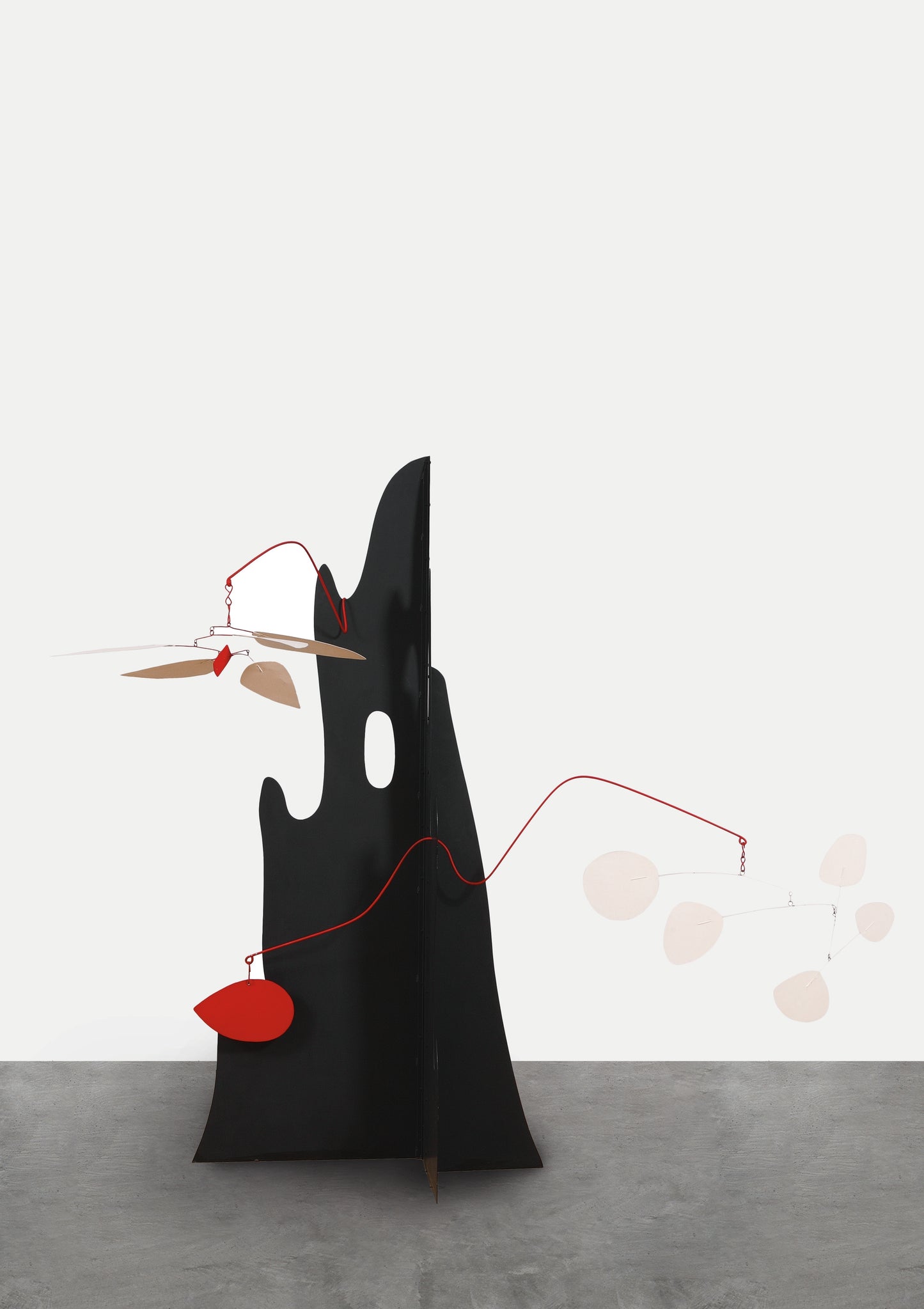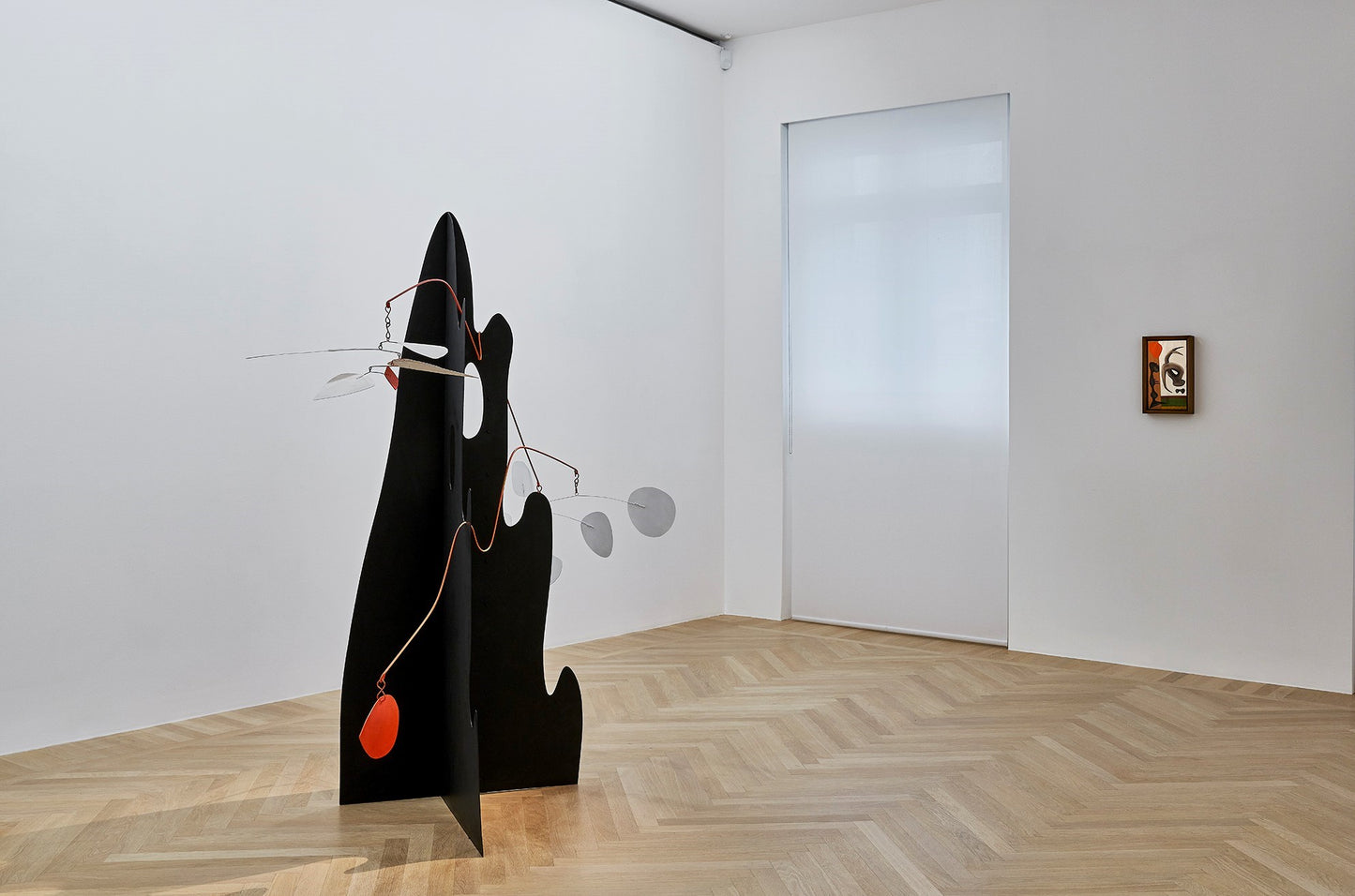Alexander Calder
Crag with White Flower and White Discs
Crag with White Flower and White Discs
Alexander Calder had a profound and lasting influence on modern and contemporary art, especially through his invention of the mobile and his pioneering approach to kinetic sculpture. His work changed how artists thought about space, movement, and abstraction.
With Crag with White Flower and White Discs (1974), Calder demonstrates his late-career mastery of form, color, and spatial choreography. Though this work is technically a stabile, anchored to the ground, it pulses with the same sense of dynamic energy and suspended balance as his iconic mobiles. Painted white discs and jagged metal shapes create a natural dialogue between “flower,” “rock,” and “air,” forming a composition that feels simultaneously grounded and in motion; connected and driven by nature.
Crag with White Flower and White Discs (1974) is part of Calder’s iconic Animals and Critters series. A body of work where he reimagined fauna through abstract, animated steel forms. These late sculptures merge Calder’s playful spirit with refined modernist structure, capturing movement and character with minimal elements. Works from this series have sold at auction between $3 to 6 million, with this particular one saling at Sotheby’s in 2014 for over $3 million.
Deeply influenced by Miró, Mondrian, and Duchamp, Calder forged a language that was wholly his own, one that brought humor, spontaneity, and motion into modernism. His contributions extended beyond aesthetics into a philosophy of engagement: art as performance, as balance, as wonder. His work has been exhibited and collected by every major modern art institution, including the Guggenheim, MoMA, Tate, and Centre Pompidou, where his mobiles and stabiles remain foundational.




